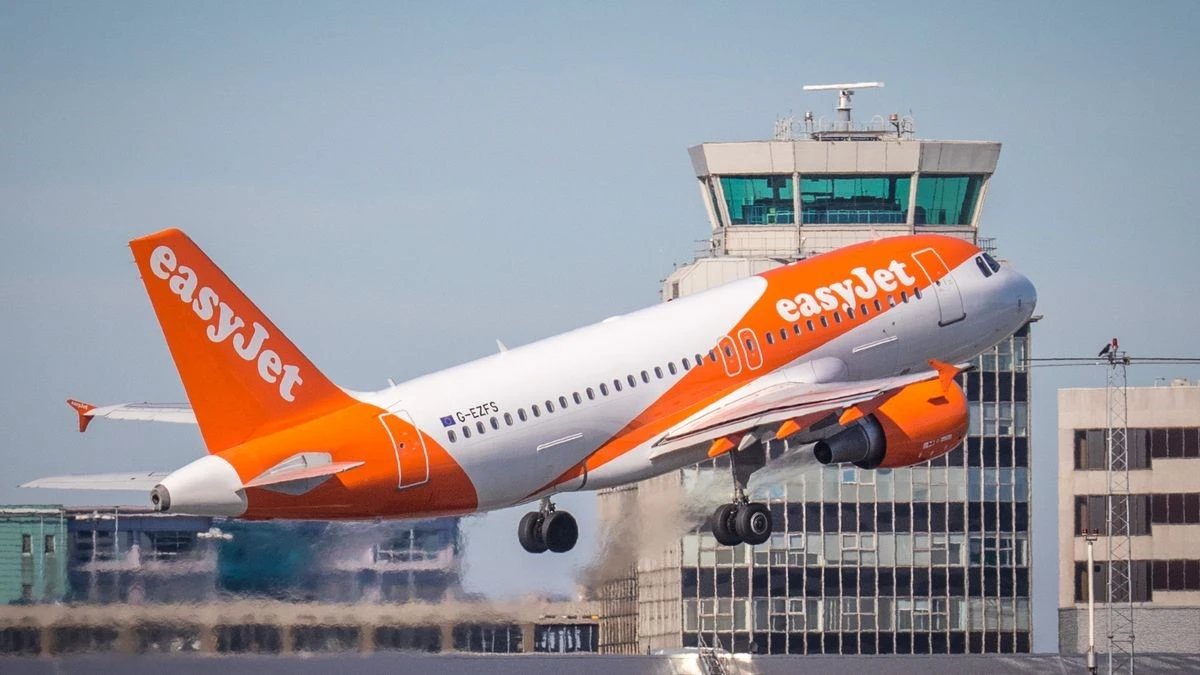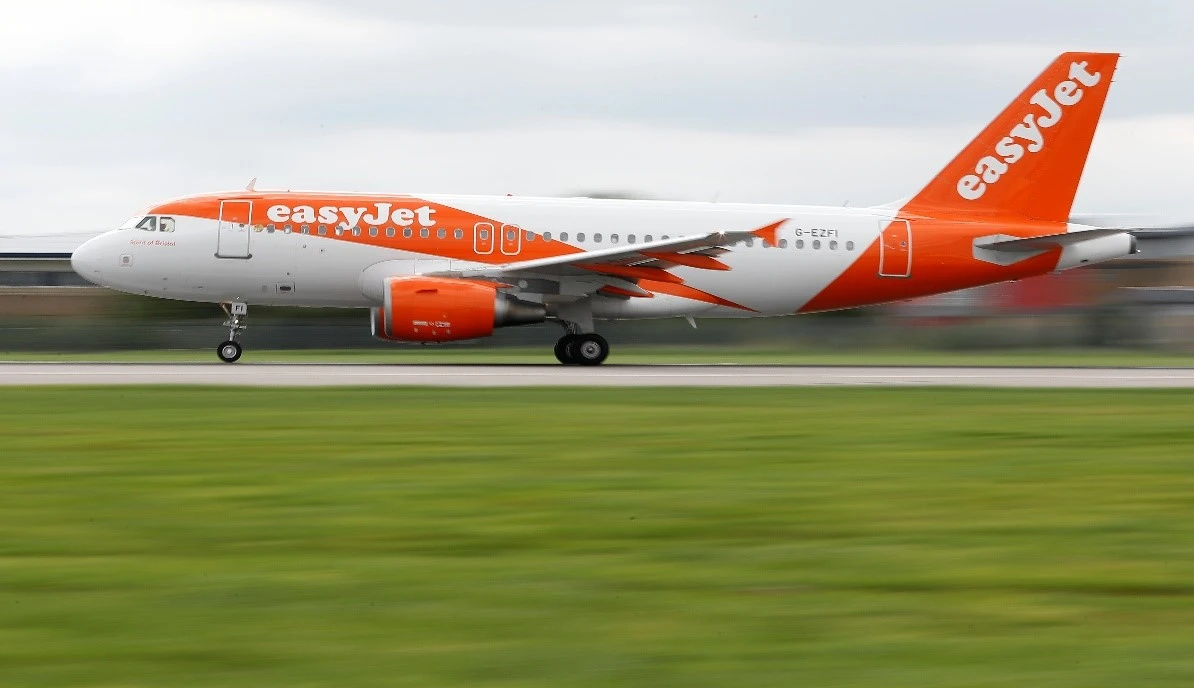EasyJet: Exploring the Success and Challenges of a Low-Cost Carrier Giant
The UK’s top-notch assignment writing service, Native Assignment Help, specialises in providing unparalleled quality and outstanding customer satisfaction through our case study sample UK. Our dedicated team can readily assist you with challenging essays or intricate research papers. Choose Native Assignment Help today and experience firsthand what a reliable and committed partner can achieve for you.
Introduction: Exploring the Success and Challenges of a Low-Cost Carrier Giant
EasyJet is a well-known low-cost carrier with its main office in Luton, United Kingdom. It was established in 1995 and has since developed into one of the biggest and most well-known airlines in Europe, emphasising inexpensive air travel to various locations. With a point-to-point network covering local and international destinations in Europe and North Africa, the airline offers domestic and international services. The principle of EasyJet's business strategy is to provide inexpensive fares while retaining operational effectiveness (Di Vaio, 2020). It does this by concentrating economies of scale and maintenance expenses on a single aircraft family, the Airbus A320 series. In terms of its present environment, EasyJet faces several obstacles and chances. To respond, EasyJet, like other airlines, had to reduce capacity, put in place safety measures, and change its flight itineraries.

Figure 1: easyJet
The present study aims to analyse a range of operational, tactical, and challenging aspects of EasyJet. The initial segment provides an overview of EasyJet and its significance within the aviation industry. The report conducts a historical analysis of the airline's inception and pivotal moments by scrutinising the primary commercial activities of EasyJet, encompassing its route network, among other aspects. The report's primary focus is on the business model of EasyJet, specifically its low-cost carrier model, and the factors that contributed to its success. The Competitive Landscape section is here to shed light on the business environment in which EasyJet finds itself. To set itself apart and keep its competitive advantage, EasyJet has implemented strategic initiatives. Challenges in operations, such as those brought on by inclement weather, are being addressed by these new programmes. The report investigated how the COVID-19 epidemic impacted EasyJet's processes and how it returned. The most important answers are highlighted in the final section of the study, and the factors that have made EasyJet successful and look promising for the company's future are explored in detail.
Business and Organisational Purposes
Organisation purposes
The mission of EasyJet is to provide low-cost and convenient air travel to a wide range of customers. Ultimately, the company's goal is to "make travel simple and accessible to all." EasyJet strives to be the top low-cost carrier by providing reasonable prices, dependable service, and a comfortable travel environment.
Key aspects of EasyJet’s
- Low-cost travel: EasyJet's main goal is to provide a variety of customers with economical air travel alternatives (Mc Loughlin, 2023). The airline seeks to offer affordable tickets and make flying accessible to various consumers by maintaining low operating expenses.
- Reliable service: EasyJet places a high priority on offering its clients dependable and prompt service. To maintain passenger confidence in EasyJet, the airline works to reduce interruptions and delays.
- Customer satisfaction: By providing good service, effective operations, and attentive customer support, EasyJet wants to provide a happy client experience (Costa et al., 2023). To better adapt its services, the business concentrates on comprehending the demands and preferences of its customers.
Major objectives of EasyJet
- Market leadership: EasyJet wants to keep holding the title of the top low-cost carrier in Europe and North Africa. The business aims to outperform its rivals in terms of client happiness and financial success to gain a substantial market share.
- Route expansion: EasyJet keeps growing its route network to reach more people and offer services in more places (Fonseca, 2020). The organisation deliberately adds new routes and spots market potential to meet client demand and boost connectivity.
- Sustainability: EasyJet has established goals to lessen its environmental impact since it understands the value of sustainable practices in the aviation sector. The corporation wants to increase fuel efficiency, invest in environmentally friendly technologies, and encourage sensible travel habits.
Organisational Structure
An example of a hierarchical structure is the functional organizational structure used by EasyJet. Employees are organised into functional groups in a functional organisation, such as operations, marketing, finance, human resources, and so on (Verma, 2022). A departmental manager oversees each department in a functional area. While reporting to higher-level management, the departments work autonomously, concentrating on their duties.
Benefits of a functional organisational structure for EasyJet
- Specialisation and expertise: EasyJet may promote specialisation and skill within each area by organising personnel based on their roles. Employees can concentrate on their specialised jobs, gain extensive knowledge, and improve their effectiveness in their areas of specialisation.
- Clear hierarchy and reporting lines: The functional structure defines the organisational hierarchy and reporting lines. This supports effective communication and decision-making inside the organisation, helps to preserve order, and clarifies roles.
- Efficient resource allocation: The functional structure enables effective resource allocation. Each department can autonomously manage its resources, maximising them to meet the aims and specialised functions of the department.
- Career development and progression: The functional structure offers distinct career routes within each functional sector. From entry-level employees to management positions, employees can advance vertically within their department, fostering professional development.
Drawbacks of a functional organisational structure for EasyJet
- Silos and communication barriers: the organisational structure’s potential to foster silos and prevent cross-functional cooperation. It could be harder to coordinate and communicate amongst departments, which might result in inefficiencies and delays in decision-making.
- Slow response to market changes: The functional structure's hierarchical design might make it more difficult to react quickly to changes in the market or consumer expectations (Barqueira, 2022). Because several levels must approve management choices, the decision-making and execution procedures may take longer.
- Lack of flexibility: The functional structure may constrain organisational flexibility and agility. Adopting creative ideas that cut across numerous functional areas or swiftly adjusting to shifting market conditions might be more challenging.
- Potential for conflicts and power struggles: the functional organisation may put departments at risk for disputes and power struggles (Klophaus, 2023). Each department's priorities may differ, resulting in conflicts of interest and difficulties in coordinating organisational objectives.
To maintain successful collaboration and accomplish their strategic goals, companies like Easyjet must carefully manage and reduce the negative aspects of this structure.

Figure 2: EasyJet flight
Organisational Functions
The many divisions or parts of an organisation in charge of certain jobs and duties associated with attaining the organization's objectives are called organisational functions. These roles cooperate and support one another to ensure the organisation runs smoothly and is successful. Operations, marketing, and finance are the three core functions at EasyJet.
- Operations: The administration and execution of EasyJet’s flight operations are the responsibility of the operations section. This involves scheduling flights, maintaining aircraft, managing ground operations, and guaranteeing crew members' and passengers' safety and security (Alberto, 2019). The operations department seeks to maximise operational effectiveness, reduce interruptions, and give passengers a dependable and hassle-free travel experience.
- Marketing: When it comes to advertising EasyJet’s service, luring clients, and raising brand recognition, the marketing department is important. It includes market analysis, public relations, price plans, consumer segmentation, and product creation. Understanding client wants and preferences and setting Easyjet apart from its rivals in the market are all marketing department goals.
- Finance: EasyJet's finance department oversees the management of the business's financial assets, guaranteeing financial stability and maximising profitability. Budgeting, financial planning, and risk management are examples of these tasks. The finance department works to guarantee good financial judgement, track the business's financial performance, and deliver reliable financial data for strategic planning and judgement.
Inter-relationship of the three functions
- Strategic alignment: The airline's marketing department works with operations and finance to align its strategic goals. Route planning, scheduling, and capacity management in operations are influenced by the identification of target markets and consumer preferences by marketing. Finance supports marketing choices through financial analysis and budgetary assistance, ensuring that marketing initiatives align with the organization's financial objectives.
- Customer-centric approach: To maintain a customer-centric strategy throughout the organisation, operations, marketing, and finance collaborate. Operations concentrate on delivering a flawless travel experience, and marketing creates attractive products. It targets the correct consumer categories, and finance supports customer-centric activities by allocating budgets and analysing value and profitability.
- Revenue optimisation: For revenue optimisation, the relationship between marketing, operations, and finance are essential (Kassem, 2023). Customer demand is influenced by marketing initiatives like price plans and advertising campaigns, which affect operations like capacity planning and flight scheduling. Finance evaluates the financial effects of price choices and offers suggestions for improving pricing strategies.
- Cost control and efficiency: The finance and operations divisions work closely together to guarantee cost management and operational effectiveness. While finance offers financial analysis and controls to monitor and optimise expenses, operations seek ways to streamline processes and lower operational costs.
- Performance management: The performance of EasyJet is measured and examined in collaboration with operations, marketing, and finance. Operations give operational; statistics, including flight cancellations and on-time performance. Marketing examines consumer happiness, market developments, and competitors’ positioning. Finance offers financial analysis and performance measures (Lippitt et al., 2023). Together, these activities evaluate the organization’s overall performance, pinpoint problem areas, and reach data-driven conclusions.
Organisational Culture
A group or organization's common values, beliefs, and behaviour are called its culture. It includes social interactions, unwritten regulations, and general business practices inside an organisation.
The culture of an organisation may be shaped via a variety of techniques, including
- Leadership: An organization's culture is greatly influenced by the conduct and morals of its leaders. Leaders act as role models and establish the tone for acceptable attitudes and behaviours.
- Hiring and selection: The procedure used in hiring and selecting employees impacts the organization’s culture. People who share an organization’s values and can contribute to the desired culture are frequently sought after.
- Socialisation and training: New hires undergo socialisation and training when they join an organisation (Abrantes, 2023). As a result, they can better comprehend the organization's values, standards, and expectations, which helps shape the culture.
- Symbols and rituals: Logos, mission statements, and business traditions are examples of symbols and rituals that may help to reinforce and express an organization's culture. The organization's common principles include visual reminders through these symbols and rituals.
There are typically four classifications of organisational culture:
- Clan culture: Clan cultures strongly emphasise cooperation, teamwork, and a supportive workplace. They place a high value on fostering a family-like environment, togetherness, and employee growth.
- Adhocracy culture: Adhocracy cultures promote creativity, taking chances, and adaptability. They promote innovation and adaptation to deal with dynamic and shifting circumstances.
- Market culture: Market cultures strongly emphasise performance, achievement, and competition. They place a high value on delivering quantifiable results, customer satisfaction, and an external emphasis.
- Hierarchy culture: Formalised institutions, laws, and procedures are characteristics of hierarchical civilizations (Mackenzie, 2023). They prize consistency and effectiveness. There is usually a clear chain of command and centralised decision-making.
EasyJet's organisational culture significantly contributes to the company’s success. It’s common to characterise EasyJet's culture as entrepreneurial, emphasising creativity, effectiveness, and a client-centered outlook. The high levels of customer satisfaction result from EasyJet’s culture of customer focus and reactivity (Rodrigues, 2019). Employees are given the freedom to go above and beyond for clients, which will improve customer satisfaction. EasyJet's entrepreneurial and innovative culture fosters an attitude of effectiveness and continual development. This promotes resource efficiency, and operational excellence, which eventually boosts profitability. EasyJet's culture encourages employee involvement, ownership, and engagement. This encourages a good work atmosphere, improves staff motivation and morale, and helps with employee retention. The culture of EasyJet values being proactive and flexible in the face of change. Employees are urged to use their imagination, take reasonable risks, and act fast when market conditions change. This enables the business to maintain competitiveness and adjust to shifting client demands and market developments.

Figure 3: EasyJet to scrap carbon offsetting to focus on cutting emissions
SWOT Analysis
| Strength | Weakness | Opportinities | Threats |
| Strong brand | Dependency on volatile fuel prices | Growing demand for air travel | Intense competition |
| Cost leadership | Limited presence in long-haul markets | Expansion into new markets | Economic factor |
| Extensive route network | Reliance on secondary airports | Digital transformation | Regulatory environment |
Strength
EasyJet has developed a strong brand presence as a top low-cost airline in Europe. Its brand is reliable, convenient, and affordable, drawing in a sizable consumer base (Mrňa, 2021).EasyJet can provide clients with affordable tickets thanks to its low-cost business style. The corporation has optimised its processes and introduced cost-saving initiatives to preserve a cost edge over its rivals. EasyJet runs a vast network of routes throughout Europe and North Africa.
Weakness
Variations in fuel prices have a big impact on EasyJet's operational expenses. This exposes the business to fluctuations in gasoline prices, which may affect its profitability.EasyJet mainly offers short-haul flights, which reduces its vulnerability to the demand for long-haul travel (Morlotti, 2023). This can be a negative compared to rivals with a better presence in long-haul markets. However, unlike large hub airports, EasyJet's strategy of operating from minor airports may result in lower passenger volumes.
Opportinities
As the need for air travel continues to rise globally, EasyJet has chances to enhance its customer base and market share. EasyJet can enter new markets by focusing on underdeveloped client niches and expanding geographically. This can entail establishing new channels and expanding into developing markets.EasyJet has the chance to take advantage of the continuing digital change in the travel sector by utilising technology to enhance customer experience, streamline operations, and provide individualised marketing.
Threats
Numerous low-cost carriers and established airlines are battling for market share in the fiercely competitive low-cost airline sector. Increased competition may result in pricing wars, hurting EasyJet's bottom line (Ahmad, 2023). Economic downturns and political unrest may influence consumer travel expenditures, impacting EasyJet's sales and profitability. Changes in laws and regulations, such as those governing aviation and the environment, may be difficult for EasyJet to handle.
PESTLE Analysis
PESTLE analysis is a methodology for assessing the outside variables that may influence an organization's operating environment. Here is an EasyJet PESTLE analysis:
Polotical Factors
- Government regulations: Governments enforce several strict laws and restrictions on the aviation sector. Regulations about safety, security, and emissions must be followed by EasyJet (Hasan, 2019). Regulation changes may affect the needs and expenses of operations.
- Brexit: EasyJet has been impacted by the political ambiguities and talks surrounding Brexit because it is a European airline. Modifications to trade agreements, customs practices, and regulatory frameworks may impact the operations and market access of the airline.
Economic Factors
- Economic growth: GDP growth, consumer purchasing power, and demand for business travel are only a few factors that greatly influence EasyJet’s sales and profitability.
- Fuel prices: Variations in fuel prices, a significant cost component, may affect EasyJet's operating expenses and profitability. Global economic variables, geopolitical developments, and supply-demand dynamics all affect changes in oil prices.
Social Factors
- Demographic trends: The demand for air travel is influenced by demographic factors such as population increase, age distribution, and travel preferences (Kumar, 2022). EasyJet must modify its offerings and marketing tactics to meet various demographic groups' changing demands and tastes.
- Environmental awareness: Carbon emissions from the aviation sector are being examined more closely due to growing concerns about climate change and environmental sustainability.
Technological Factors
- Digital transformation: The travel business is changing due to technological developments such as mobile applications, artificial intelligence, and data analytics. EasyJet may use technology to improve customer satisfaction, increase operational effectiveness, and spur service innovation.
- Cybersecurity: The airline sector confronts cybersecurity concerns as it becomes more reliant on digital platforms and data management. To safeguard consumer data and guarantee the security of its systems.
Legal Factors
- Employment laws: Due to its international operations, EasyJet must abide by local labor laws, as well as those governing working conditions, hours, and benefits. Managing the airline's employees and operating expenses may be impacted by changes in labor regulations.
- Consumer protection and rights: To maintain fair pricing, transparency, and proper treatment of customer complaints, EasyJet must abide by consumer protection regulations. Legal repercussions and reputational damage might result from not abiding by the law.
Environmental Factors
- Climate change and sustainability: There is pressure on EasyJet to embrace sustainable practices and decrease its carbon impact. To lessen its influence on the environment, the airline must monitor emissions standards and invest in fuel-efficient aircraft.
- Natural disasters and disruptions: Operations for air transport can be disrupted by extreme weather conditions, natural catastrophes, and other occurrences. To lessen the effects of such disasters, EasyJet has to have risk management policies and contingency plans in place.
Conclusion
EasyJet is a well-known low-cost carrier with a large route network, a strong brand presence, and a customer-focused philosophy operating throughout Europe. The firm has succeeded in the aviation sector by using its advantages and overcoming its shortcomings. EasyJet’s flat organisational structure, which heavily emphasises employee empowerment and decentralisation, has made it possible to make decisions quickly and adapt to changing circumstances. Although this organisational style encourages productivity and creativity, coordination and communication issues may arise. EasyJet’s primary areas of operations, marketing, and finance interact and work together to maintain operational effectiveness, customer happiness, and financial stability. The alignment of these activities greatly influences the organization's success, which facilitates strategic decision-making, revenue optimisation, cost control, and performance monitoring. EasyJet offers an innovative, efficient, and customer-focused culture that values entrepreneurship. Due to its favourable effects on staff engagement, operational effectiveness, customer happiness, and changeability, this culture has contributed to the organization's success. When it comes to the outside world, EasyJet encounters both chances and dangers. The airline has possibilities to improve its market position and customer experience due to rising demand for air travel, growth into new markets, and digital transformation. However, fierce rivalry, economic considerations, governmental restrictions, and environmental issues threaten the organization's operations and financial success. EasyJet must manage these outside forces by monitoring market developments, adhering to rules, and implementing sustainable practices.
Overall, EasyJet's performance depends on its capacity to build on its advantages, counteract disadvantages, seize chances, and control dangers. The firm is well-positioned in the cutthroat aviation market thanks to its powerful brand, broad route network, cost leadership, and customer-centric philosophy. EasyJet can preserve its success and participate significantly in the European airline market by consistently adjusting to the changing environment, investing in innovation and sustainability, and having a customer-focused approach.
References
Abrantes, J. and e Quadros, R.C., 2023. Impacts of COVID-19 on Flights Operated at Lisbon and Porto Airports (Portugal): Comparative Analysis of TAP Air Portugal, Ryanair, and easyJet. InChallenges and Opportunities for Aviation Stakeholders in a Post-Pandemic World(pp. 189-217). IGI Global.
Ahmad, F., Bask, A., Laari, S. and Robinson, C.V., 2023. Business management perspectives on the circular economy: Present state and future directions.Technological Forecasting and Social Change,187, p.122182.
Alberto, M. and Minh, H., 2019.Easyjet Plc Airlines: take-off to new opportunities(Doctoral dissertation).
Barqueira, A., Quadros, R. and Abrantes, J., 2022. Airline booking applications: the case of Ryanair, Easyjet, and tap air Portugal. Aeron Aero Open Access J,6(1), pp.7-15.
By german sherlock, 2023, Easyjet flight, (online) https://www.google.com/search?q=easyjet&rlz=1C1YTUH_enIN1013IN1013&sxsrf=APwXEdcPQ3SKGuWB7iARWgFOMmyTAEEqZA:1684575617228&source=lnms&tbm=isch&sa=X&ved=2ahUKEwi2_IuazYP_AhXkT2wGHTPdA4wQ_AUoAnoECAEQBA&biw=774&bih=708&dpr=1.25#imgrc=J0gKlqHK7DBhJMaccessed on 20.05.2023.
Costa, R.L.D., Cunha, A., Gonçalves, R., Pereira, L., Dias, Á. and Silva, R.V.D., 2023. The strategic impact of information systems in organizations: an empirical study. International Journal of Applied Decision Sciences,16(1), pp.87-113.
Di Vaio, A., Palladino, R., Hassan, R. and Escobar, O., 2020. Artificial intelligence and business models in the sustainable development goals perspective: A systematic literature review.Journal of Business Research,121, pp.283-314.
Fonseca, A.C.H., 2020.Equity valuation of the EasyJet Company(Doctoral dissertation).
Hasan, N., Miah, S.J., Bao, Y. and Hoque, M.R., 2019. Factors affecting the post-implementation success of enterprise resource planning systems: a perspective of business process performance. Enterprise Information Systems,13(9), pp.1217-1244.
Kassem, R., Salama, A. and Ganepola, C.N., 2023. CSR, credibility, employees' rights and legitimacy during a crisis: a critical analysis of British Airways, WizAir, and EasyJet cases.Employee Relations: The International Journal,45(1), pp.1-20.
Klophaus, R. and Yu, C., 2023. Short-haul airline services in Europe and North America-A cross-business model and cross-continental analysis.Journal of Air Transport Management,109, p.102400.
Kumar, S. and Thapliyal, A., 2022. In which areas can Easy Jet further improve its use of management information systems? Central European Management Journal,30(3), pp.382-386.
Lippitt, P., Itani, N., O’Connell, J.F., Warnock-Smith, D. and Efthymiou, M., 2023. Investigating Airline Service Quality from a Business Traveller Perspective through the Integration of the Kano Model and Importance–Satisfaction Analysis.Sustainability,15(8), p.6578.
lobbymap.org, 2023. easyJet Logo, (Online).<https://lobbymap.org/company/Easyjet-22b7a844fd695e3179c166b00e41a8c5/projectlink/Easyjet-in-Climate-Change-d256940d9bbd154b7b15cf8b0dcf8f45> accessed on 26.05.2023.
Mackenzie, H. and Bititci, U.S., 2023. Understanding performance measurement and management as a social system: towards a theoretical framework.International Journal of Operations & Production Management, (ahead-of-print).
Mc Loughlin, K., Lewis, K., Lascelles, D. and Nudurupati, S., 2023. Sustainability in supply chains: reappraising business process management.Production Planning & Control,34(1), pp.19-52.
Morlotti, C. and Redondi, R., 2023. The impact of COVID-19 on airlines’ price curves.Journal of Air Transport Management,107, p.102328.
Mrňa, D. and Badánik, B., 2021, November. Differences in low-cost airline operating models in 2018, 2019, and 2020–comparison of easyJet, Ryanair, and Wizz Air. In2021 New Trends in Aviation Development (NTAD)(pp. 128-133). IEEE.
Paul Sandle, 2022, EasyJet to scrap carbon offsetting to focus on cutting emissions, (online) https://www.google.com/search?q=easyjet&rlz=1C1YTUH_enIN1013IN1013&sxsrf=APwXEdcPQ3SKGuWB7iARWgFOMmyTAEEqZA:1684575617228&source=lnms&tbm=isch&sa=X&ved=2ahUKEwi2_IuazYP_AhXkT2wGHTPdA4wQ_AUoAnoECAEQBA&biw=774&bih=708&dpr=1.25#imgrc=WVbssfVSuTb4gMaccessed on 20.05.2023
Rodrigues, M. and Rocha, V., 2019.Easyjet-airline: low-cost carriers take over Europe(Doctoral dissertation).
Verma, V. and Kumar, H., 2022. How can easyJet maintain its profitability and market share in the low-cost airline sector? Central European Management Journal,30(2), pp.53-57.



